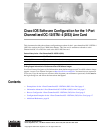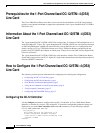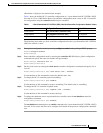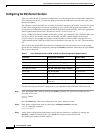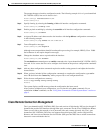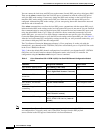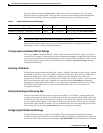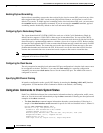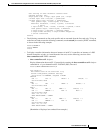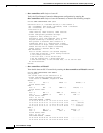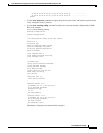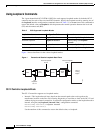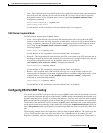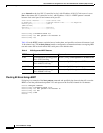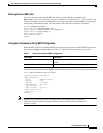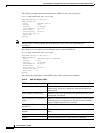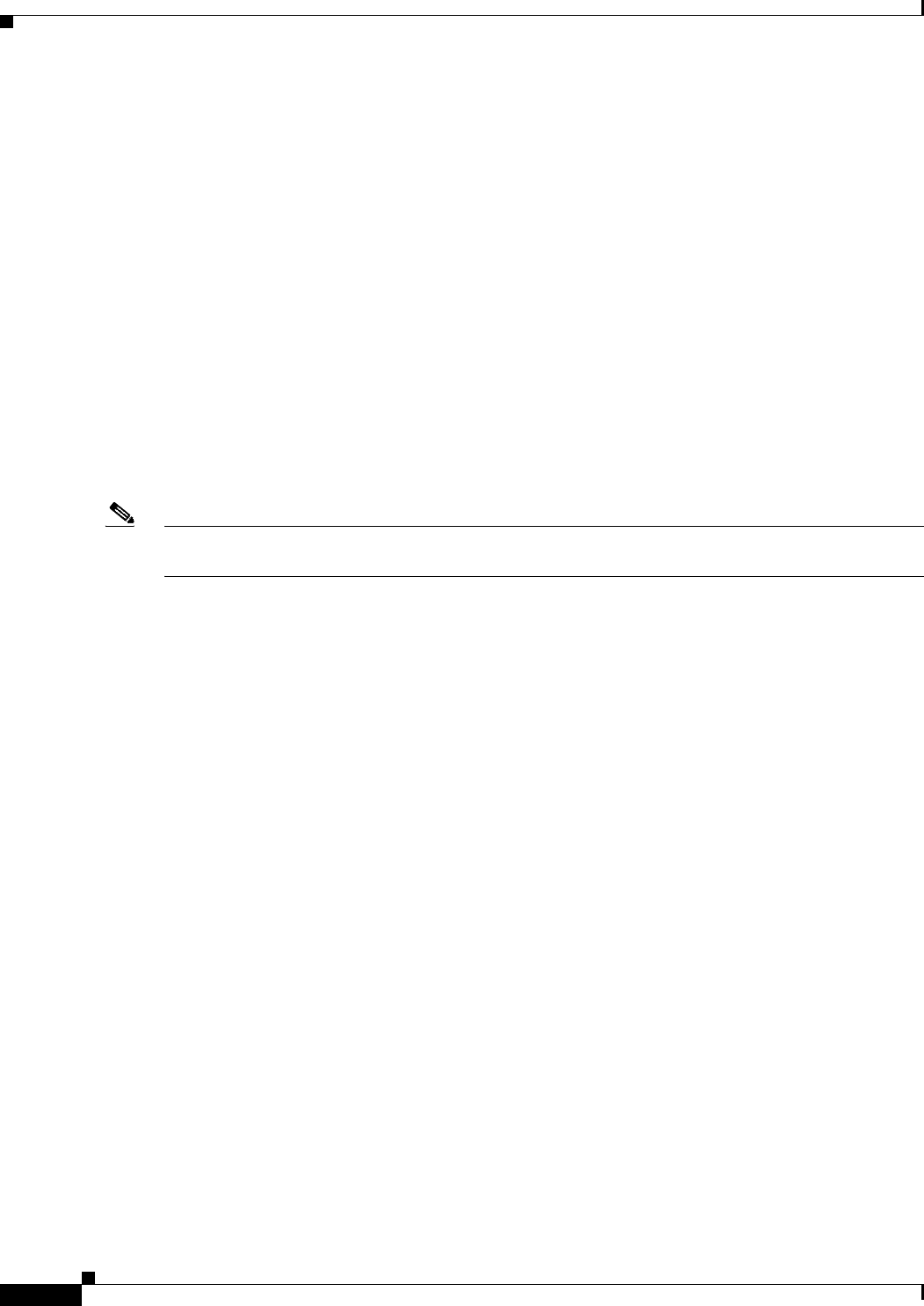
Cisco IOS Software Configuration for the 1-Port Channelized OC-12/STM-4 (DS3) Line Card
How to Configure the 1-Port Channelized OC-12/STM-4 (DS3) Line Card
8
Cisco IOS Release 12.0(8)S
Enabling Payload Scrambling
Payload (data) scrambling converts the data received by the local or remote DS3 ports from any of the
three supported third-party DSU vendor modes (Digital-Link, Kentrox, and Larscom) as well as the
default, Cisco mode. To enable payload scrambling on the local and remote DS3 ports, you must enter
the scramble interface configuration command. If you do not enter the scramble command, payload
scrambling remains disabled by default on the local and remote DS3 ports.
Configuring Cyclic Redundancy Checks
The 1-port channelized OC-12/STM-4 (DS3) line card uses a 16-bit Cyclic Redundancy Check by
default, but also supports a 32-bit CRC to detect errors in transmitted data. You can set the CRC by
entering the crc interface configuration command. The router that sends the data divides the bits in the
frame message by a predetermined number to calculate a frame check sequence (FCS). Before sending
the data, the router appends the FCS value to ensure that the frame message contents are exactly divisible
by a predetermined number. The router that receives the data divides the frame message by the same
predetermined number and calculates the FCS. If the result is not 0, the router that receives the data
assumes that a transmission error occurred and sends a request to the router to resend the data.
Note When enabling a 16-bit or 32-bit CRC on a local interface, ensure that the remote device is also
configured for a 16-bit or 32-bit CRC.
Configuring the Clock Source
The only exception for matching local and remote DS3 port configurations is that the clock sources must
be set opposite each other. Therefore, if you enter the clock source line controller configuration
command, you must enter clock source internal for the remote DS3 port. The ADM clock source is
configured to internal.
Specifying DS3 Channel Framing
In interface configuration mode, specify DS3 framing by entering the framing [c-bit | m13] interface
configuration. Use the no form of this command to return to the default, c-bit framing.
Using show Commands to Check System Status
Each Cisco 12000 Series Router line card maintains information about its configuration, traffic, errors,
and so on. You can access this information by using the show commands. Following are descriptions and
examples of the show commands.
• The show interfaces command outputs information about the system interfaces. Following is a
sample of the show interface serial command for port 0 of a line card installed in slot 1, channel 1:
Router# show interfaces serial 1/0:1
Serial1/0:1 is up, line protocol is up
Hardware is OC12-Channelized-to-DS3 channel
Internet address is 101.5.1.2/24
MTU 4470 bytes, BW 44210 Kbit, DLY 200 usec, rely 255/255, load 1/255
Encapsulation HDLC, crc 16, loopback not set
Keepalive set (10 sec)
Last input 00:00:05, output 00:00:03, output hang never



